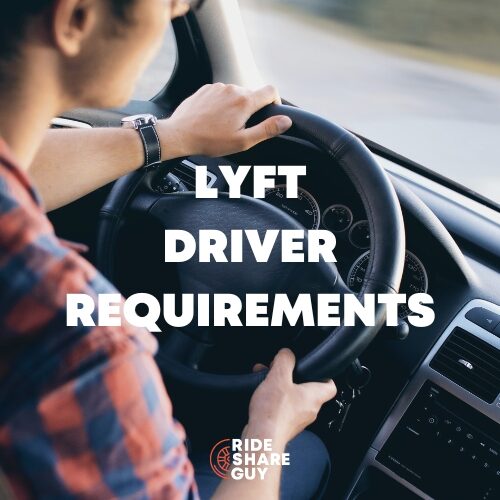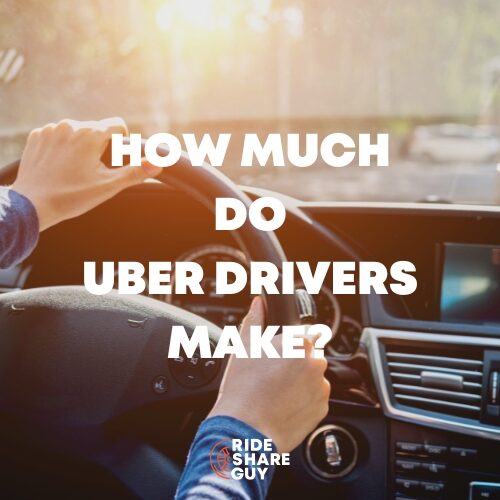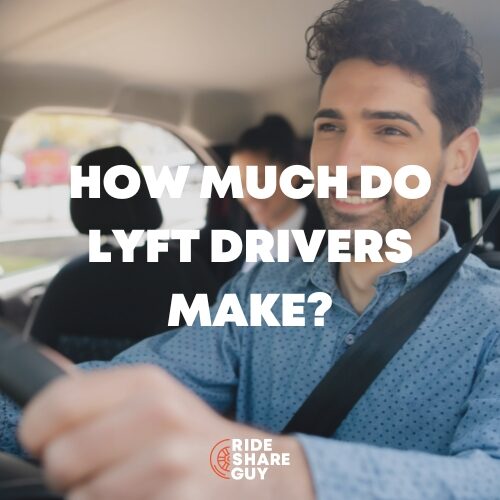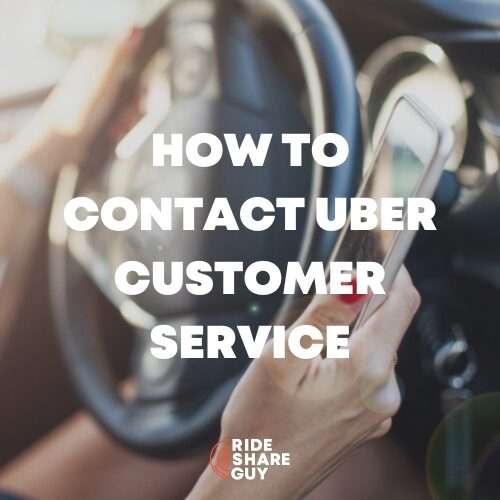In recent years, Uber has revolutionized urban transportation. These platforms have brought convenience and flexibility to millions of users worldwide.
However, with the rapid growth of such services, ensuring safety for both drivers and passengers has become increasingly important. Uber has implemented various security measures, one of which is rider verification.
While most people are familiar with Uber’s driver vetting process, fewer are aware of how the company also works to verify riders, aiming to create a safer, more trustworthy environment for everyone involved.
This article delves into the details of Uber’s rider verification system, which was piloted in a few cities and now it is being released nationwide. In this package, there are other Driver app enhancements.
What Is Rider Verification?
Rider verification is the process through which Uber ensures that users signing up for the platform are legitimate and can be held accountable for their actions. Just as Uber drivers must undergo background checks and meet certain eligibility criteria, rider verification is intended to minimize risks associated with allowing anyone to request a ride through the app.
While it’s easy to assume that the dangers in ridesharing rest solely on drivers, the reality is that drivers also face risks, including theft, harassment, and physical violence. Uber’s rider verification helps mitigate some of these concerns by verifying the identity of riders before they can fully access the platform.
Uber CEO Dara Khosrowshahi’s Announcement in Washington DC
“There are more than 7 million monthly drivers and couriers on the Uber platform around the world. Unlike many riders and consumers who pop in and out, the amount of time they spend on the app is measured in hours and days – not minutes.
New features and app improvements have an outsized impact on their daily lives, which is why we must continuously find ways to improve their experience, day in and day out.
This morning in Washington, DC, we unveiled important new features designed to help make the things drivers and couriers do every day safer, fairer, and easier, adding up to an experience they can find only on Uber.”
Over the years, Uber made hundreds of improvements to the app to help keep drivers safe. Last November, Uber announced comprehensive changes to their deactivation policies to give drivers and couriers a louder voice in the process.
Today, they announced some additional features, including:
Nationwide Launch of Enhanced Rider Verification
Beginning tomorrow, drivers across the country will see when a rider has undergone additional verification steps with a new “Verified” rider badge, visible right on the trip request.
Uber designed these new verification measures in response to driver feedback that they want to know more about who is getting in their car. All riders will have their account information checked against trusted third-party databases or have the option to upload an ID. Once verified, they will receive a “Verified” badge.
Earlier this year, Uber began testing the program in a handful of cities across the US. In those pilot markets, the majority of riders are verified, and they tend to give drivers 5 stars more often. Riders who are verified also get fewer serious complaints from drivers.
Uber will also be introducing new verification options, starting with the ability for existing CLEAR Members to verify their identity with CLEAR to get the badge.
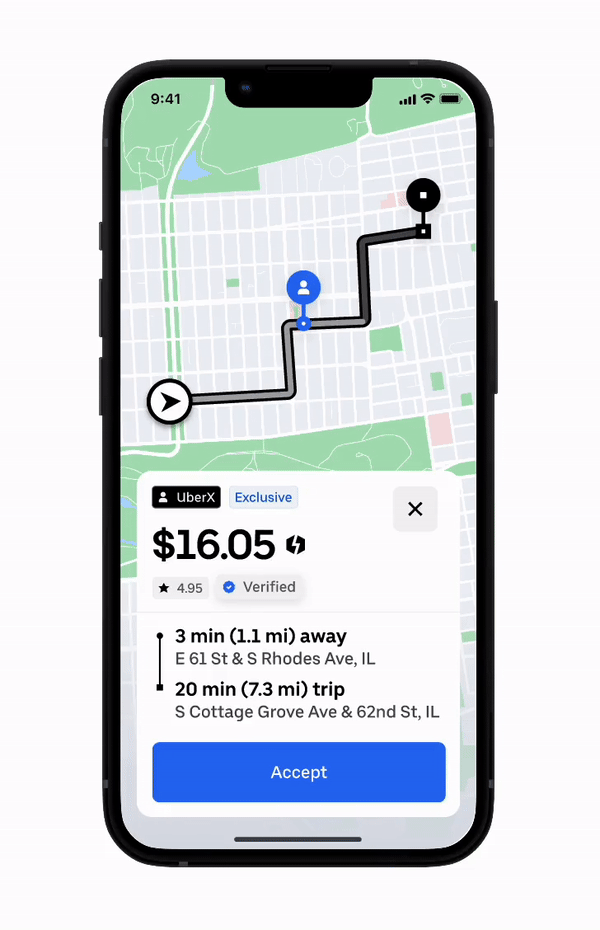
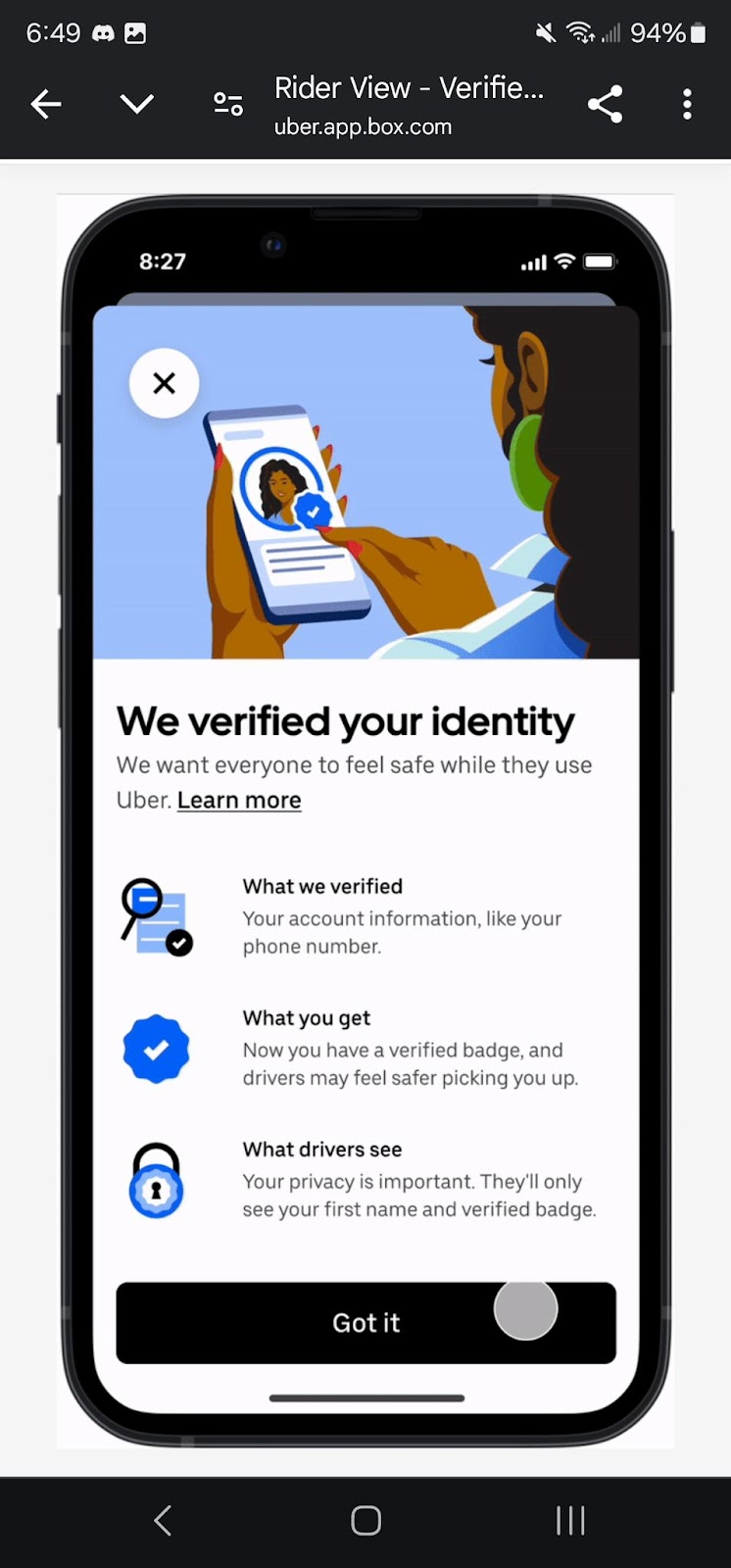
Why Is Rider Verification Important?
Safety is paramount in the ridesharing industry, and Uber has been proactive in addressing concerns from both drivers and passengers. Rider verification serves several critical functions:
Enhancing Driver Safety: For drivers, knowing that their passengers have undergone a basic verification process increases their confidence in accepting ride requests. Riders who are verified are perceived as more accountable, reducing the chances of problematic behavior.
Building Mutual Trust: Both parties, the driver and rider, need to trust each other for a smooth ride experience. Rider verification reassures drivers that the passengers they pick up are legitimate users of the service, not anonymous individuals. Trust is vital for maintaining long-term growth in the rideshare industry.
Preventing Fraudulent Activities: Rideshare platforms like Uber are vulnerable to fraudulent activities, including identity theft, account hacking, and the use of fake payment methods. Rider verification helps minimize these risks by ensuring that riders are who they claim to be.
Uber’s Rider Verification Methods
Uber has introduced several methods to verify riders. These techniques vary depending on the region, regulatory requirements, and the rider’s history on the platform.
Payment Method Verification: One of the simplest forms of rider verification is verifying payment information when users first sign up. Uber requires users to link a valid payment method, such as a credit or debit card. This not only ensures that the rider is financially accountable for the trip but also provides some identity verification since most payment methods are tied to a person’s real name and bank account.
Phone Number Verification: Uber, in most countries, verifies the rider’s phone number as part of the account creation process. This is a key method of ensuring that there is a real, functioning line of communication between the rider and Uber. Uber sends a verification code via SMS that the user must enter into the app. Phone number verification is also important for trip-related communication, such as when a driver needs to contact a rider for pickup details.
Government ID Verification: One of the more stringent methods Uber has employed in certain countries is government ID verification. Riders may be asked to upload a photo of a government-issued ID, such as a driver’s license or passport, along with a selfie to match the ID. This form of verification is especially useful in areas with higher safety concerns or in cases where riders are using alternative payment methods like cash.
National Launch of “Record My Ride”
Last year, Uber announced a new feature that allows drivers to use the front-facing camera on their smartphone to record video and audio during trips without the need to invest in a dashcam.
The pilot was a success, and Uber heard that more drivers wanted access. Now, drivers in all 50 states have access to this tool, helping to give them an extra layer of protection on their trips.
As mentioned in the past, Uber built Record My Ride with privacy in mind: every recording is encrypted and stored directly on drivers’ devices, and nobody—not Uber, not riders, not drivers—can access it unless a driver chooses to send it in for review. We believe this feature will help promote safety and allow Uber to more quickly and fairly resolve any incidents that may arise.
However, I still say that nothing will replace a great dashcam that directly uploads to the cloud, like the one I have been using for 18 months. DisplayRide (Use code RSG to bring service to $10/month) is an amazing safety tool for drivers, even if one is driving part-time!
New Technology with Your Safety in Mind
Trip Navigation on Tesla Displays: Drivers and couriers with Teslas can now connect their car’s display to the Uber app for a seamless driving experience. Once a trip or delivery is accepted, the route information will automatically be sent to their Tesla display, making turn-by-turn navigation easier and safer to follow.
Handsfree Prompts: Now, drivers using iOS can use Siri to customize voice-prompted shortcuts in the app, such as calling a rider, going online, and more – totally hands-free.
PIN Verification: In addition, drivers will now be able to turn on PIN verification to confirm they’re picking up the correct rider. Riders will need to provide the PIN to the driver before the trip can start.
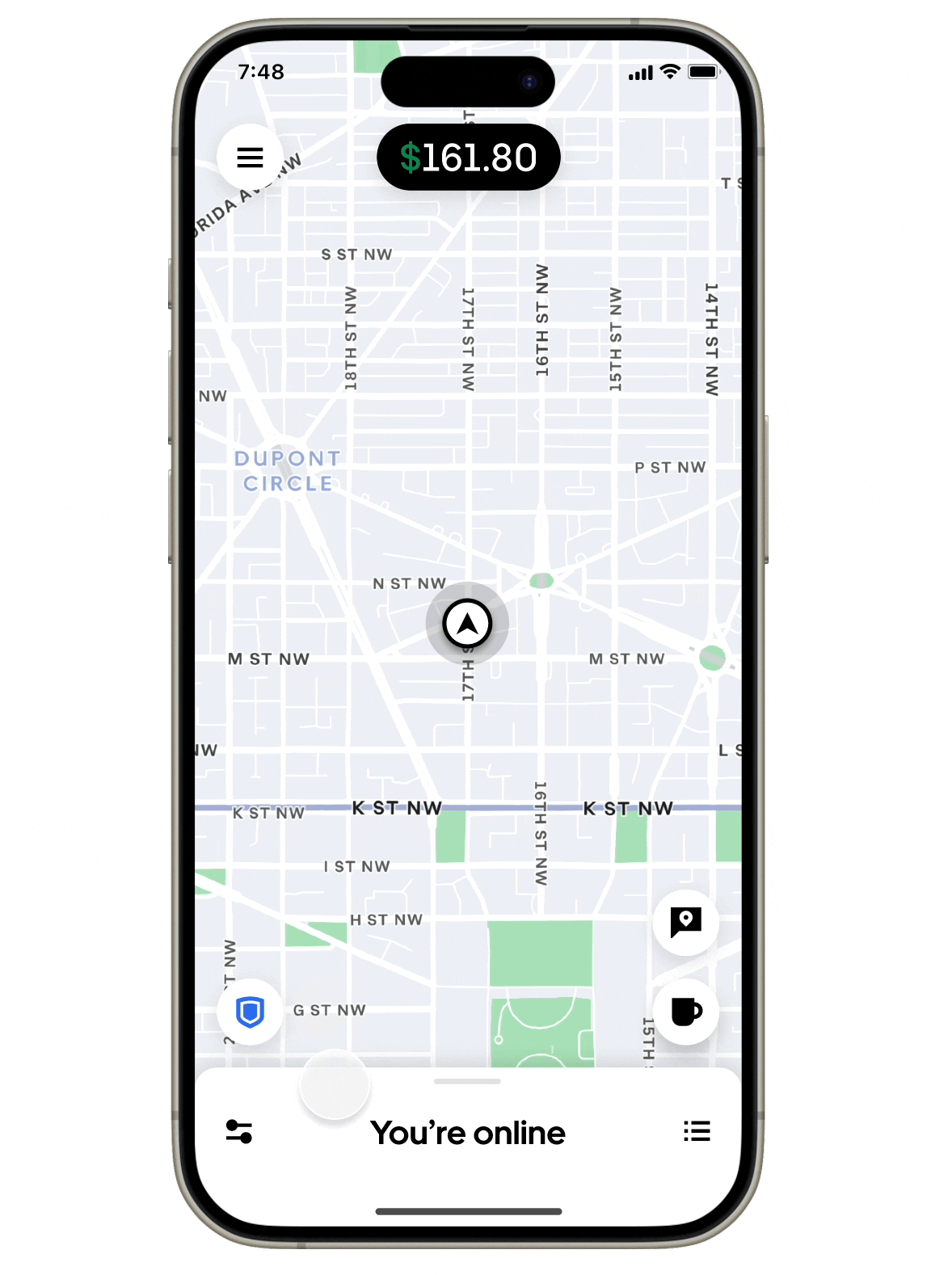
Prioritizing Safety and Respect for Drivers
Encouraging Better Behavior from Riders, Restaurants & Customers: Uber is stepping up its efforts to encourage better on-trip behavior from riders.
If a driver reports a rider for rude or inappropriate behavior, Uber will soon send the rider a warning and tips from real drivers on how they can improve for their next ride. They’ll receive this via email and an in-app pop-up screen during their next trip.
Uber will also be sharing important information with delivery customers, restaurants, grocery stores, and other establishments on Eats to explain what respectful interactions with couriers look like.
As always, users who do not follow Uber’s Community Guidelines or whose ratings fall below a certain level may lose access to the platform.
Choosing to Block Riders Pilot
Uber is piloting the option for drivers to block a rider if they rate a trip 2 or 3 stars. This new option is in addition to Uber’s existing policy of automatically unmatching drivers and riders any time drivers rate a ride 1 star.
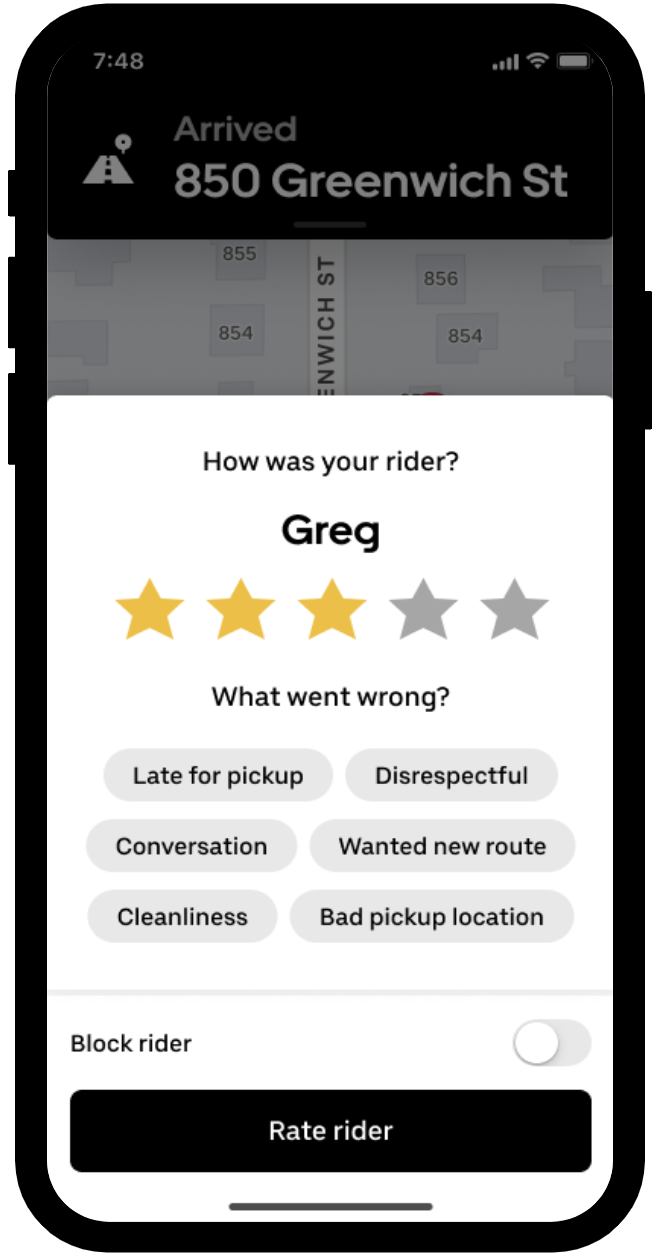
Conclusion
Uber’s rider verification process plays a crucial role in maintaining the safety and trust within its ridesharing ecosystem. By implementing a range of verification methods, from payment method checks to government ID uploads, Uber helps protect both drivers and passengers. While some users may find the process inconvenient, the benefits of reducing fraud, enhancing safety, and building trust far outweigh the potential downsides.
There is a lot to like in this package.
Does it go far enough?
Should Riders like drivers be asked to upload a verified government ID during onboarding?
I would love that, but I bet it will never happen! Uber can not afford to even lose 5% of the passengers on its platform. Since they are releasing this rider verification program nationwide, I really would like to find out if this program reduced assaults on drivers around the nation. Uber has the data!
As Uber continues to innovate, the future of rider verification will likely become even more robust, making ridesharing an even safer option for people worldwide.
In a world where trust is increasingly essential, Uber’s commitment to verifying its users is a positive step toward a safer, more reliable service for all.
Sergio@RSG
